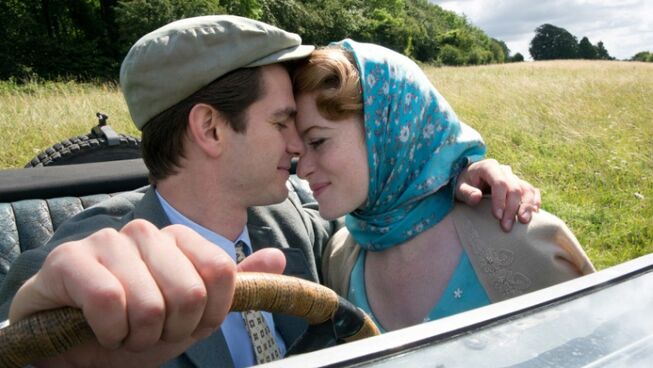
1.5 out of 5 stars
The association that most people may have with the saying 'a sting in the tail' is to experience an unpleasant and unexpected conclusion to a situation or story. This is the case with the directorial debut of Andy Serkis (War of the Planet of the Apes) and the retelling of the life story of Robin Cavendish (Andrew Garfield) who despite contracting polio, became an advocate for disabled patients. What begins as a beautiful film depicting the history of a fighter for the rights of those with physical challenges suddenly turns into a message that promotes euthanasia. All that to say that this review will contain spoilers to ensure people are aware of the underlying intent of the film.
Polio does not have the crippling effect on our culture like it did in previous generations. It is a disease state that causes paralysis to the patient and their only means of living are to remain on a respirator and dependence on others for care. Robin Cavendish was a successful businessman who had recently married his wife Diana (Claire Foy) when he contracted the ailment while on a business trip in Africa. In the 1950s, the only option for individuals with polio was to lie in a hospital bed for the rest of their days. Robin and Diana chose to ask the difficult questions and pushed to break free from this hellish existence by moving to their country home. During his lifetime, Cavendish eventually functioned with the aid of a specially designed chair by the inventor, Teddy Hall (Hugh Bonneville). Then these advocates for the rights of disabled patients worked throughout their lives to help develop the world's awareness of the issues for people with similar illnesses.
As a director, Serkis proves that he has the skills that extend beyond his expertise in stop-motion computer generation acting. He manages to capture the passion and love that was displayed in the relationship between the Cavendishs. Despite the central character being limited to mere facial expressions to convey the story, Garfield and Foy are convincing in their abilities to show the love that was evident within this family. The winsome aspect of this film is to educate the world on how people with physical disabilities can live out their lives despite their physical limitations. Then with the introduction of the third act of the film, this message of hope gets derailed, which despite the surprise it did feel like a betrayal.
Providing a realistic view of the life and death of Robin Cavendish is essential and understandable in the roles of the screenwriter and director. The challenge is that this aspect of the film seems to be counter-intuitive to everything leading up to his death. The elements that surround his work for the sake of others with his condition are something to celebrate. The portrayal of their marriage is a testimony to pure unconditional love and a representation of the vows of ‘in sickness and in health.’ Then to have the final act turn into advocacy for assisted suicide caused all of the beauty of the story to turn into a basket of bitter emotions. This may have been the reality to Robin’s death, but to commit so much of the movie to this aspect of his choice to take his own life ultimately undermines the effectiveness of the overall theme of Breathe.
The initial impression of Andy Serkis' film is that it is similar The Theory of Everything and looks like a film that audiences should support. Unfortunately, the message the film eventually communicates proves to be the wrong message for those in Robin Cavendish's situation. The original intent and purposes of this story as a celebration of life is self-defeating due to its advocacy of assisted suicide.
REEL DIALOGUE: What are some of the bigger questions to consider from this film?
Breathe should have been a film about fighting for the rights of those with physical ailments, but it fails to deliver. If this film does any good, it has the potential to encourage people to know that God cares for them. Before anyone is born and they experience all of life's inevitable trials, God knew us all. He sees all of his creation as a masterpiece, as the psalmist says in Psalm 139, you are fearfully and wonderfully made. Also, throughout the trials and travails of this time on earth, he provides hope through the work of his son, Jesus, who came to save us and provide us with access to eternal life. The final message of the Bible and the life of Jesus is to know that anyone can choose to have this hope of eternal life. A life without tears, without wheelchairs and without pain in the presence of God.*
Where can you find help?
In Australia: Call Lifeline at 13 11 14 or go to the website: lifeline.org.au
If you want to more about the message of Jesus: Contact the team at City Bible Forum through sydney@citybibleforum.org or citybibleforum.org/sydney





